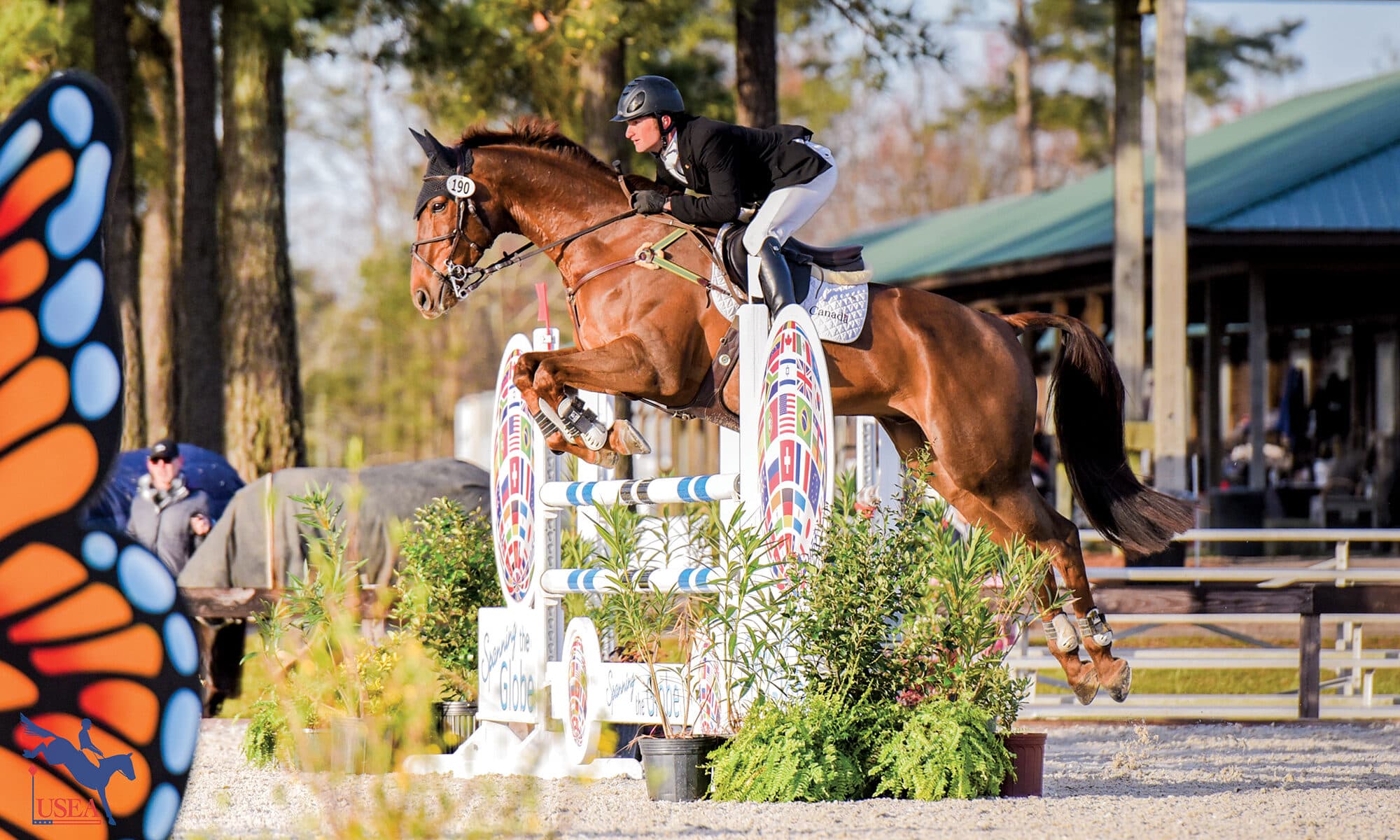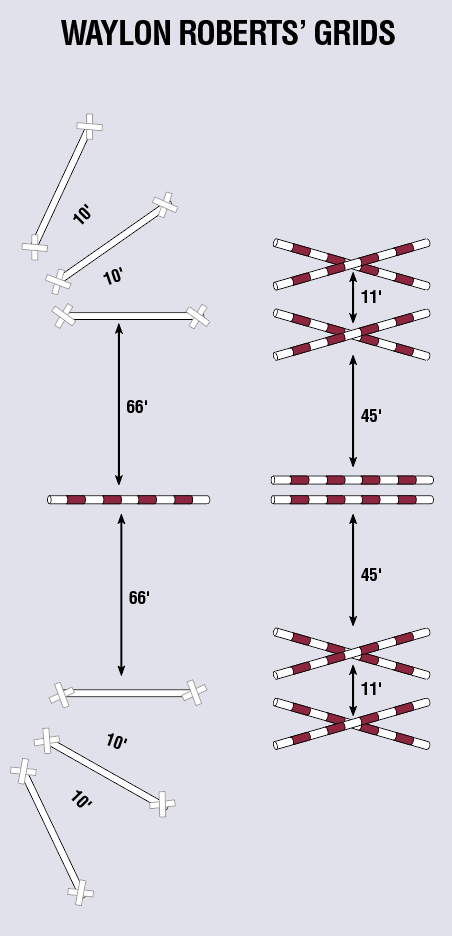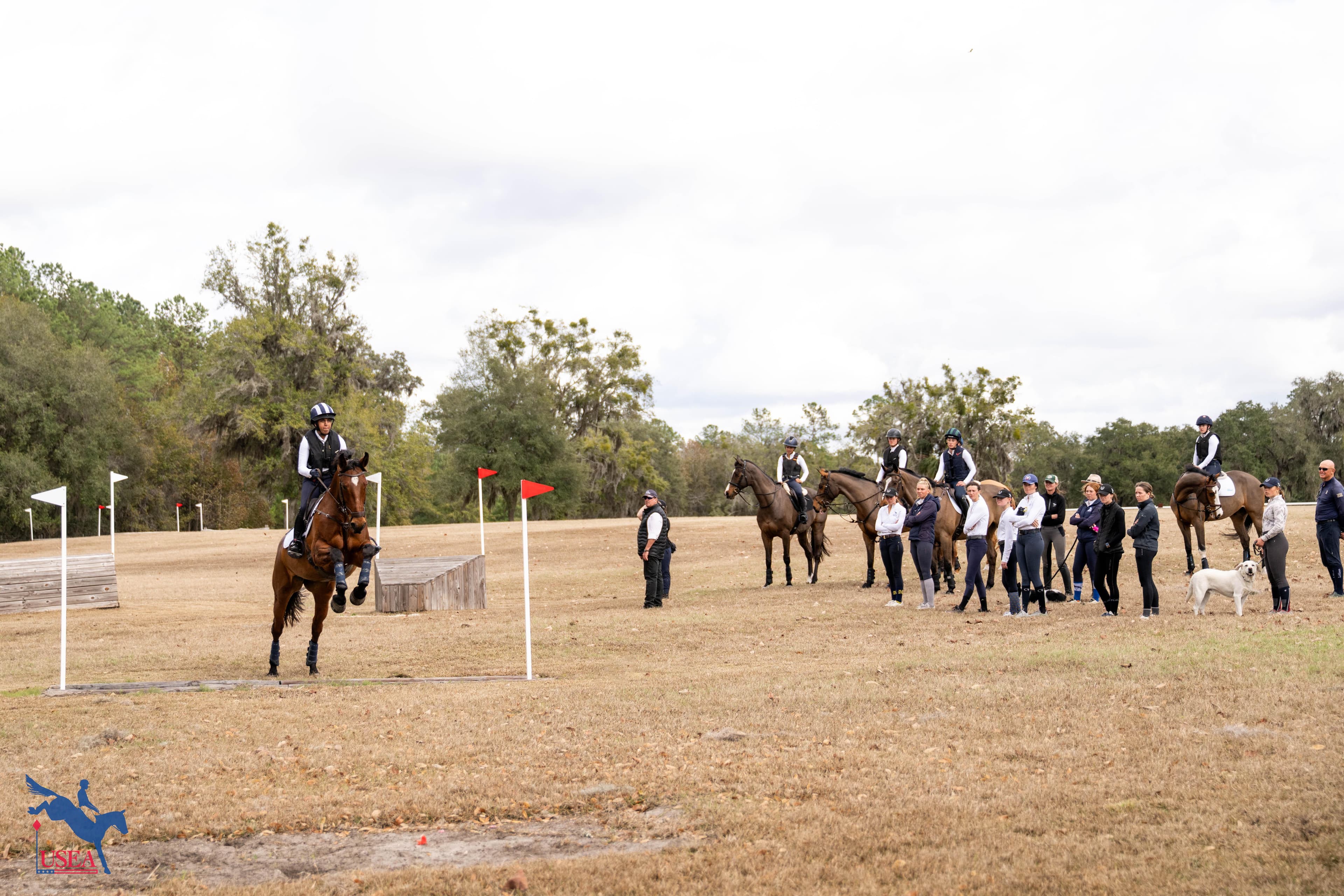Grid Pro Quo with Waylon Roberts

Ready to spice up your arena routine this winter training season? In this series, we are revisiting some of our favorite Grid Pro Quo articles from Eventing USA to help you use the off-season to your advantage and keep you and your horse in tip-top shape for when it's time to get back out there. Click here to check out other past Grid Pro Quo exercises!
WHY:
With the competition season over, many horses are enjoying a little downtime before gearing up for a hopefully exciting 2020 season. Before getting caught up in the rush to get ready for your next competition, it’s great to spend a little time working on footwork exercises for your horse and position exercises for yourself. Without the pressure of competing, it’s the perfect time to take a breath and really focus on the details.
In addition to helping horses with their footwork, this is a great exercise for working on your horse’s suppleness and core strength while jumping. It’s not uncommon for horses to get stiff and flat while on course, so it’s important to spend the time to teach them how to effectively use their bodies to create a better jump. For the rider to be successful, they must be aware of the effect of their aides throughout a series of jumps. And since the jumps stay relatively small throughout this exercise, there’s no harm in repeating it over and over until you get it right. Like most gymnastic exercises, it’s usually quite clear when you get it right, so while it’s always helpful to have a good set of eyes on the ground, it’s possible to work through this exercise on your own if you stay focused and honest with yourself about your mistakes.
The other thing that this exercise is good for is that it really teaches riders to keep their leg on and to follow their horse’s jump with both their hand and their seat. Because, as I like to say, jumping without leg or a forgiving contact is like finding a black cat in a dark room with the cat door open.
HOW:

Before you even start jumping, it’s important to make sure your horse is properly warmed up on the flat. No amount of jumping exercises will improve a poorly started or nervous horse, so you have to be sure that you have taught your horse well on the flat and that your horse knows about contact and leg. This exercise will certainly help further your training, but you must make sure you have the basics down before starting.
Once you are ready to start jumping, you should begin with the cavaletti on a 15-meter circle. At first, all of the cavaletti should be on the ground, and I like to trot through them a time or two in each direction to show your horse where they are going. If you have a young or inexperienced horse, you can always walk through them first.
Regardless of the level of your horse, the goal is to introduce these cavaletti in a stress-free way. A tense horse will have a harder time learning and working through their bodies than a relaxed horse. So relaxation is always the goal.
Once you are confidently and quietly trotting through the cavaletti, you can begin cantering through them, still on that 15-meter circle. You should then begin raising the cavaletti height based on your horse’s experience. Most of my young horses will stick to the cavaletti on the ground, while my more advanced horses will quickly progress to the cavaletti at their top height.
Regardless of what height the cavaletti are, or where you’re at in the warm-up stage, the rider needs to always be aware of their inside aides and use their inside leg to help keep the horse from leading with the inside shoulder through the cavaletti. I find that this is a great exercise to help with rushing horses, as it’s hard for them to cleanly make their way through the exercise without making a mess of it. It’s also the first part of this series that really helps to teach the rider to follow their horse’s jump with both their hand and their seat.
The next part of this exercise starts with the same cavaletti but incorporates a small vertical in the center. The distance between the cavaletti and vertical can be adjusted according to the size of the arena, however I most like it set at 66 feet, so the horses have a quiet five strides between each set of cavaletti. Repeat this on both reins until the striding is even and quiet. For riders that are struggling to see their distance, I like to have them count their strides out loud. Not only does this help them to be more aware of their striding, but it also keeps them breathing! I do like to keep the vertical fairly low for the level until the horse can stay balanced on an even stride without getting strung out. This portion of the exercise teaches the horse and rider rhythm, patience, and straightness.
If this has been accomplished without much fuss, the pair can move on to the bounce exercise. To start here, you can canter each cross-rail bounce off of a long approach from A or C, and depart from each jump with a rollback turn back to the centerline. So if you are on the right lead, you would canter down the long side of the arena and turn down centerline at A to have a long approach to the cross-rail bounce closest to C. Upon landing, you would make a rollback turn to the left back up centerline. This rollback will not only help to create a lead change, but it will also help the rider learn how to switch their inside legs over the jump to show the horse a correlation between the leg, the lead change, and the bounce.
This can be a little intense for some horses, so be sure to keep the cross-rails low until they have their confidence in the exercise. And be sure to rest and reward your horse often. Again, since the jumps are small, it’s fine to repeat as needed, but you should never repeat until exhaustion.
From here the pair are ready to include the oxer. Again, if you want to start on the right lead, you will approach your first bounce from C, jump the bounce, stay straight for three strides to the oxer, and then another straight three strides to the second bounce. The horse should hold their lead throughout the exercise and the rider must now work to keep the horse straight.
Again, we are looking to improve the horse’s rhythm, straightness, and patience to and away from a fence. Always keep the jumps low until the horse and rider are confident, but then you can play around with the height to challenge yourself.
About Waylon Roberts
Waylon Roberts has been representing Canada in international competition since the age of 14, when he attended the 2002 FEI Children’s Final for show jumping in Brazil. Since then, he has represented Canada at the North American Youth Championships and the Pan American Games. He has trained with some of the world’s top riders and competed at some of the world’s most prestigious events, including the Kentucky Three-Day Event on several occasions. When not competing, Roberts can be found teaching and training at his base in Opelika, Alabama. Learn more at www.jwrsporthorses.com.














